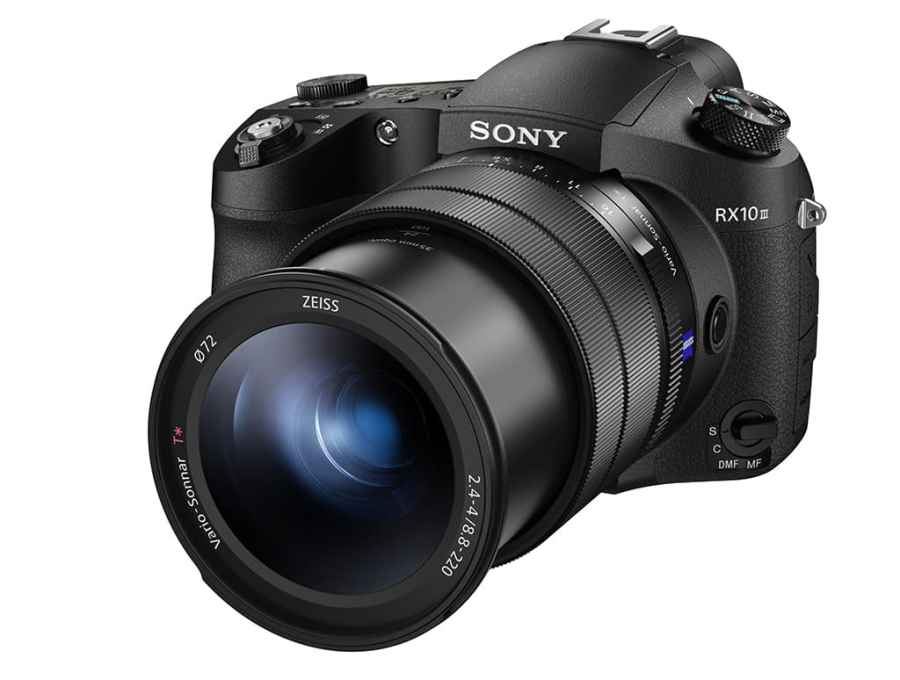The AP team has hunted down the best second-hand cameras and lenses for landscape, portrait, sport/action, wildlife and macro photography.
While it may not be as exciting as ripping the plastic off a brand new piece of tech, buying the best second-hand cameras and lenses can save you a small fortune. New cameras and lenses tend to be expensive, and are getting more so with every new generation. Just like a new car, the minute they’re used, they’re devalued, but this doesn’t mean they’ve lost any functionality or usefulness.
We’ve scoured the best of the online second-hand retailers in the UK and US to bring you our picks of second-hand bargains in both cameras and lenses. Many of these are items that the AP team have used, tested and loved for many years now – so you can be confident they’ll stand the test of time.
Why buy second-hand?
Buying second-hand can be a great way to get yourself fantastic photographic kit at a cut-down price. You can also arguably get more bang for your buck – the professional and high-end enthusiast kit from up to ten years ago can often be bought for about the same price as brand new kit that’s beginner to mid-range. Go back and look at the kind of images people have taken over the past ten years. Are the older ones radically worse in quality than today’s? Of course not!
There are more bonuses to buying second-hand. Much of the depreciation on older items has already happened, which means you’ll see the value of your investment drop a lot less than you would if you’d bought new. If you were to buy a brand-new Fujifilm X-T5 right now, and then sell it on in a year’s time, you’d see a significant drop compared to what you paid. However, if you were to buy an X-T2, and take good care of it, you would probably be able to sell it on for about the same amount, perhaps with a small drop. This can make it much easier to upgrade.
Worldwide semiconductor shortages have also made it harder to get hold of new kit, and the increase in cost-of-living has made everyone that bit more penny-conscious. The second-hand market is booming right now – which is why it pays to have some help. And that’s where we come in. This guide is designed to help you find the best second-hand cameras and lenses around. If you already have one and need the other, we have some useful guides to the best second-hand cameras and best second-hand DSLR lenses.
Which second-hand camera and lens do I need?
We’ve broken this guide down into what we reckon are the best second-hand cameras and lenses for different genres. Whether you shoot landscapes, portraits, wildlife or macro images, you’ll find some top-tier recommendations.
The kit in this guide should all cost less than £1000/$1000, and some cameras and lenses considerably less than that, with some coming in under £500/$500 and some even lower. Obviously prices do vary depending on the item’s condition, and can fluctuate more generally, so check what you’re getting into before buying anything. We’ve listed ballpark prices for every item on the list, but don’t be surprised if you find it going for a little more – or even, if you’re lucky, a little less.
We recommend buying from reputable dealers like MPB, Wex Photo Video, Park Cameras, Camera World, Adorama (US) and BH Photo & Video (US). This will mean the item will have been checked before being sold to you, and you also may get a limited warranty (3-6 months is normal) in case of any defects that become apparent after purchase. You can try your luck on eBay or Amazon Marketplace if you want – but don’t say we didn’t warn you.
Don’t forget to check out some of our other second-hand buyers’ guides, if you want to further tail0r your search for a second-hand bargain. We have a rundown of the best second-hand full-frame camera bargains, as well as the best second-hand camera systems for under £1000. And if you like things smaller than small, our guide to the best second-hand macro lenses is worth reading.
So, with all that taken care of, here is our essential buyers’ guide to the best second-hand cameras and lenses…
Best second-hand camera for landscapes: Fujifilm X-T2
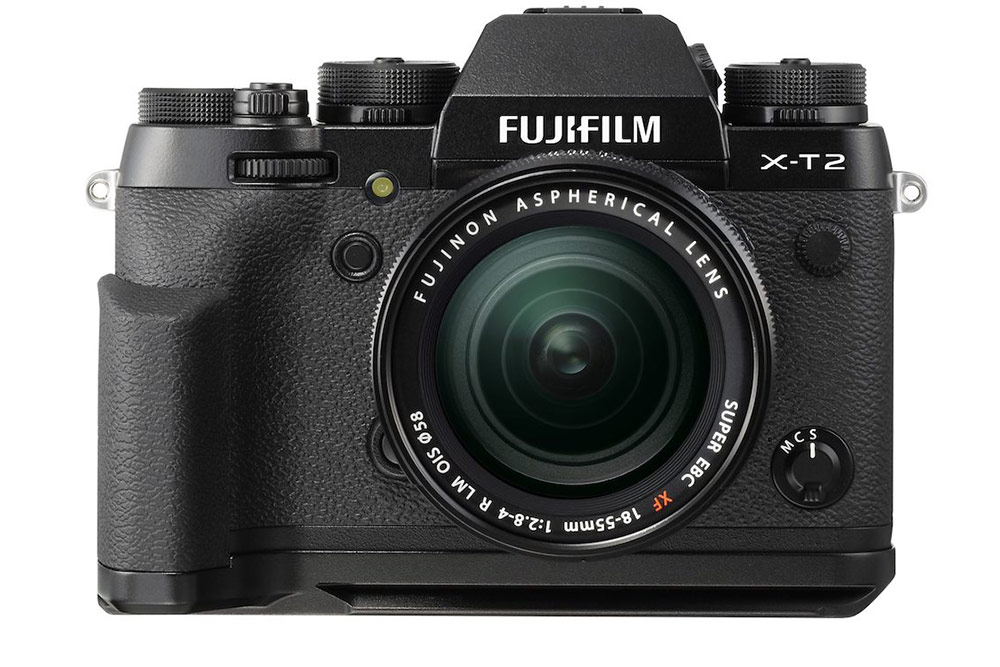
Fujifilm X-T2
At a glance:
- Sensor: 24.3MP APS-C CMOS (23.6×15.6mm)
- ISO range: 200-12,800; 100-51,200 (extended)
- Continuous shooting: 14fps (electronic shutter); 8fps (mechanical shutter)
- Video: 4K (3840×2160) at up to 30p
- Price: around £469 / $579
Fujifilm’s X-T2 has a wonderful blend of traditional design, modern technology and great colour science. Thanks to its shutter speed, sensitivity (ISO) and exposure compensation dials, combined with an aperture ring on the lens, you can select or adjust the exposure settings without even having to power-up the camera, so you’re ready when the light arrives.
There’s also a dual-tilting screen which means that, whether you’re shooting in landscape or portrait orientation, you can keep an eye on the image preview without having to bend and look in the viewfinder. That said, if you do use the viewfinder, you’ll find that it’s larger than average for an APS-C format camera, with a 0.77x magnification that’s more commonly found on full-frame models. It means you have an excellent view of the scene with plenty of detail clearly visible.
In addition, Fujifilm drew on its background in film production for the Film Simulation modes that can be used to give the X-T2’s images a particular look and feel. With 15 of these to choose from, including the excellent Acros for monochrome images with bite and the delightfully muted Classic Chrome, there will be a Simulation mode to suit all tastes, landscapes and weather conditions.
Further good news is that while the X-T2 measures a fairly compact 132.5×91.8×49.2mm, and weighs a reasonably modest 507g with a battery and memory card, as soon as you pick it up you’ll realise that it has been made to last. In addition, it has a metal body and 63 seals to keep out moisture and dust, which means that if you get caught out by the weather, you don’t need to worry unduly.
While the X-T2 is our top pick for shooting landscapes, it’s by no means a one-trick pony. Its AF system, for instance, which has up to 325 AF points covering most of the frame, is customisable so its response can be tailored to suit the subject and shooting conditions. It’s a nifty performer that can be turned to wildlife or sports photography between landscape shoots.
Fujifilm offers a huge range of X-mount lenses, and they have a great reputation for optical quality. There’s also a nice mix of zoom and prime lenses to attract landscape photographers. The XF 14mm F2.8 R prime, for example, has an equivalent focal length of 21mm and at 65×58.4mm and 235g, it makes an attractively compact and lightweight lens for a long walk in the countryside.

Fujifilm’s Acros black & white mode can give great results for landscapes. Fujifilm X-T2, 18-55mm, 1/220sec at f/16, ISO 200. Photo credit: Angela Nicholson
It’s available second-hand in excellent condition for about £420. However, with a diameter of 64.5mm and length of 33.7mm, the XF 18mm F2 R could be an even more attractive option for a day wandering in the hills. It weighs just 116g, offers an equivalent focal length of 27mm and retails for approximately £260 second-hand. If you prefer a zoom lens, Fujifilm has plenty to offer a landscape photographer.
The XF 8-16mm F2.8 R LM WR, for example, which has an equivalent focal length of 12-24mm and a constant aperture of f/2.8, can be found second-hand for around £1,150. Alternatively, the XF 10-24mm F4 R OIS, which is equivalent to a 15-36mm lens on a full-frame camera, is available for around half that price.
Second-hand classic: Fujifilm X-T2
Best full-frame second-hand camera for landscapes: Sony Alpha 7R II

Sony A7R II
At a glance:
- Sensor: 42.2MP full-frame Exmor R CMOS
- ISO range: 100-25,600 (50-102,400 extended)
- Continuous shooting: 5fps
- Video: 4K (at up to 100 MBps)
- Price: around £949 / $1,499
The Sony A7R II has the same 42.2MP full-frame Exmor R CMOS sensor as in the A7R III, which means it can capture the same superb-quality images. But even second-hand it costs about £700 less, which gives you more scope to pick up a tasty lens and a couple of extra batteries with it.
Although a fraction of the size of a full-frame DSLR, the A7R II has a similar design. It sports a 2.36 million-dot OLED viewfinder at the centre of its top-plate that boasts 0.78x magnification, along with a 3-inch, 1.23-millon-dot tilting screen on its back. As well as the high level of detail captured by the A7R II, landscape photographers will love its wide dynamic range, which means that clouds don’t burn out too readily.
Read our Sony Alpha 7R II Review
Best MFT second-hand camera for landscapes: Panasonic Lumix LX100 II

The Lumix LX100 II is great for viewfinder shooting as well as with the LCD. Photo credit: Andy Westlake
At a glance:
- Sensor: 17MP Four Thirds MOS
- ISO range: 200-25,600 (100 extended)
- Continuous shooting: 11 fps max, 5.5fps with AF-C
- Video: 4K 30fps
- Price: around £619 / $729
Although it’s a compact camera, the Panasonic LX100 II has a comparatively large 17MP Four Thirds type sensor. What’s more, it’s a multi aspect-ratio sensor which means when the switch on the lens barrel is used to change between 4:3, 3:2, 1:1 and landscape-friendly 16:9, the diagonal angle of view stays the same.
Panasonic paired this sensor with a lovely (if flare-prone) 24-75mm equivalent f/1.7-2.8 lens that renders details sharp and enables selective focusing or background blur more than some other compact camera optics. Add in the lens aperture ring, shutter speed dial and exposure compensation dial and you have a delightful camera for mid-walk landscape photography that feels good and goes well beyond a point-and-shoot model.
Read our Panasonic Lumix LX100 II Review
Best second-hand lens for landscapes: Tamron SP 24-70mm f/2.8 Di VC USD
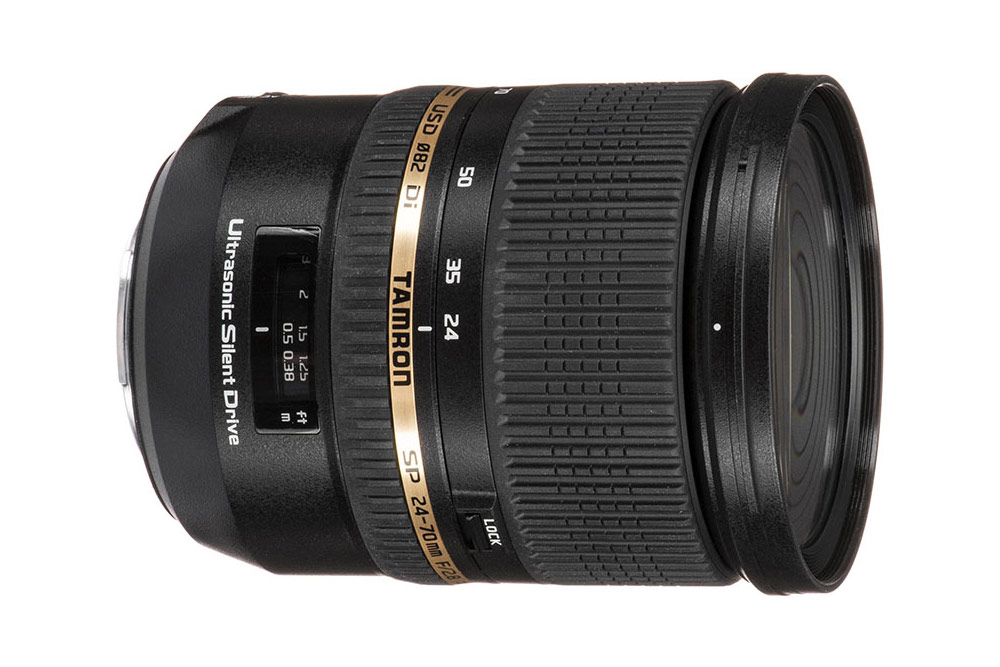
Tamron SP 24-70mm f/2.8 Di VC USD
At a glance:
- Elements/groups: 17/12
- Minimum focus distance: 38cm
- Weight: 825g
- Price: around £357 / $649
Tamron may have moved onto making the second generation of this high-end general-purpose lens but the original SP 24-70mm F/2.8 Di VC USD, available in Canon EF, Nikon F and Sony A mounts, is an attractively priced alternative.
It’s well-made with reassuring weight hinting at the amount and quality of glass inside its weather-sealed barrel. Tamron’s Vibration Compensation (VC) system is also built-in, which is handy if you’re not keen on carrying a tripod around. Our tests found it’s sharpest at between f/5.6 and f/11 and it captures a similar level of detail to the hugely popular Canon EF 24-70mm f/2.8L USM that usually costs over £250 more in similar condition. Don’t forget to order an 82mm mount protective filter to go with it.
Read our Tamron SP 24-70mm f/2.8 Di VC USD Review
Best second-hand lens for landscapes: Sigma 12-24mm f/4.5-5.6 II EX DG HSM

Sigma 12-24mm f/4.5-5.6 II EX DG HSM
At a glance:
- Elements/groups: 17/13
- Minimum focus distance: 28cm
- Weight: 670g
- Price: around £409 / $438
Available in Canon EF, Nikon F, Sigma and Sony A mounts, the full-frame Sigma 12-24mm f/4.5-5.6 II EX DG HSM (and its predecessor) is a temptingly affordable, extremely wide rectilinear lens that enables high-impact images at a fraction of the cost of lenses such as the Canon EF 11-24mm f/4L USM, Sigma 12-24mm f/4 DG HSM Art and Sony 12-24mm f/4 or f/2.8 optics.
It may not offer the same levels of sharpness as other more expensive lenses, nor the faster constant aperture, but for the right scene, perhaps making use of the minimum closest focusing distance of 28cm with a clump of bright spring flowers in the foreground of an attractive landscape, it can really deliver the goods.
Best second-hand camera for portraits: Sony Alpha 6100
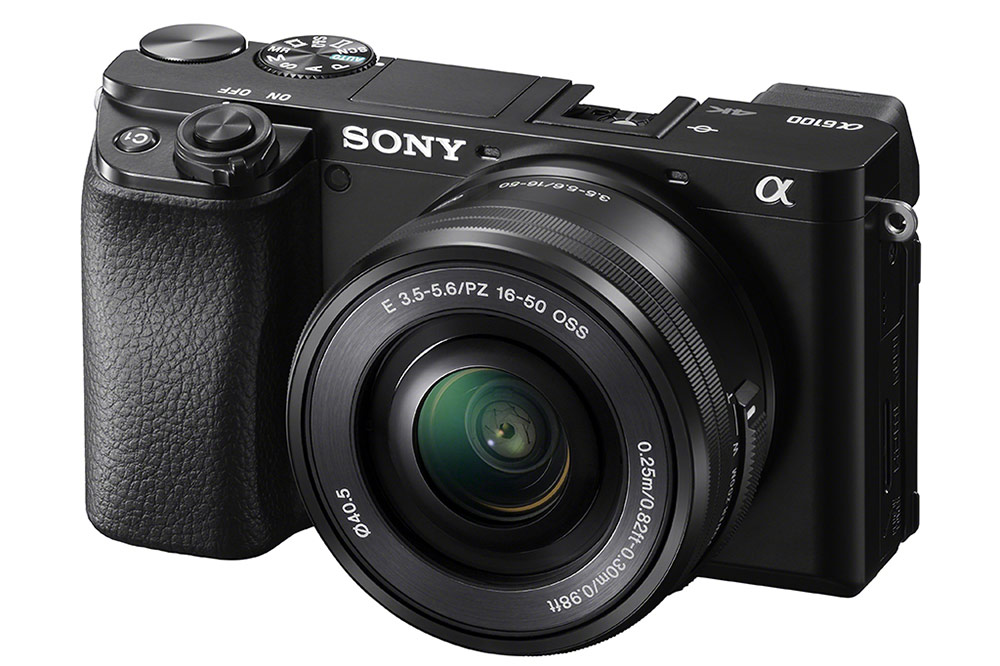
Sony A6100
At a glance:
- Sensor 24.2MP APS-C Exmor CMOS (23.5×15.6mm)
- ISO range: 100-32,000; 100-102,400 (extended)
- Continuous shooting: 11fps
- Video: 4K (3840×2160) at up to 30p
- Price: around £520 / $709
Ask any portrait photographer what’s the most important part of a portrait and they will invariably reply ‘the eyes’. With a few creative exceptions, getting the eyes sharp in a portrait is generally regarded as the most important step.
Thanks to its Real-time Eye AF system, the Sony A6100 makes that easy at an attractive second-hand price of around £520. When the Eye AF is activated via the menu, the camera automatically detects eyes in the frame and focuses on them when you half-press the shutter.
You can even set it to prioritise the left or the right eye if you like. Also, when the A6100 is set to AF-C, it will continue to focus on the selected eye as the person moves around the frame or turns their head away from the camera a little. And, with 425 phase detection and 425 contrast detection points covering the vast majority of the imaging area, your subject can be close to the edge of the frame, which means you can be creative with composition.
It means that you can concentrate on getting the exposure and framing just as you want them while the camera nails the focusing. There’s also the option to switch between human and animal eye detection, so if pet portraits are your thing, then the A6100 can help with that as well.
Although the A6100 has a good-quality 1.44m-dot electronic viewfinder built-in, the 3in, 921,600-dot screen on its back is a tilting unit which means it’s really useful for composing landscape format images. That’s very handy if you want to put the camera on a tripod so that you can keep the conversation flowing with your model. It can help you to capture more relaxed, natural-looking shots.
Inside the A6100 is an APS-C format Exmor CMOS sensor with 24.2 million pixels, which enables its images to have a good level of detail without taking up huge amounts of space on your memory card or storage drive. That pixel count also means that noise is kept under control well so you needn’t be too concerned if light levels fall and you have to push up the ISO a little.
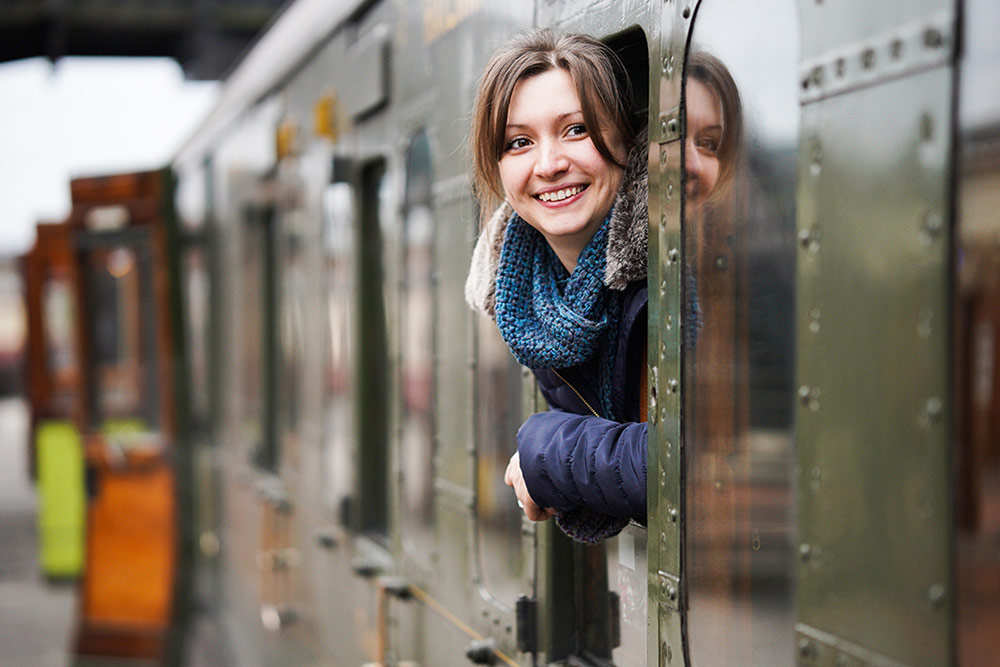
A short telephoto lens is ideal for portraits, ideally backed up by reliable face detection. Sigma 56mm F1.4 DG DN, 1/1000sec at f/1.4, ISO 400
Sony offers an extensive range of lenses with the E-mount and the A6100 can accept both full-frame and APS-C format optics. With that in mind, the Sony FE 50mm F1.8, which can be found in excellent condition for around £120, makes an attractive portrait lens. It’s a full-frame optic with an equivalent focal length of 75mm on the A6100.
Another more versatile option is the Vario-Tessar T* E 16-70mm F4 ZA OSS, which is designed for APS-C format cameras and gives an equivalent focal length range of 24-105mm with a constant aperture of f/4. It sells second-hand for £420 in excellent condition and it’s a great choice for everyday use as well as portraits.
Alternatively, the full-frame Sony FE 70-200mm F4 G OSS (available for around £960) which has an effective focal length of 105-300mm on the APS-C format camera, makes a good choice for outdoor portraits and active pet-shoots.
Best second-hand compact for portraits: Fujifilm X100F
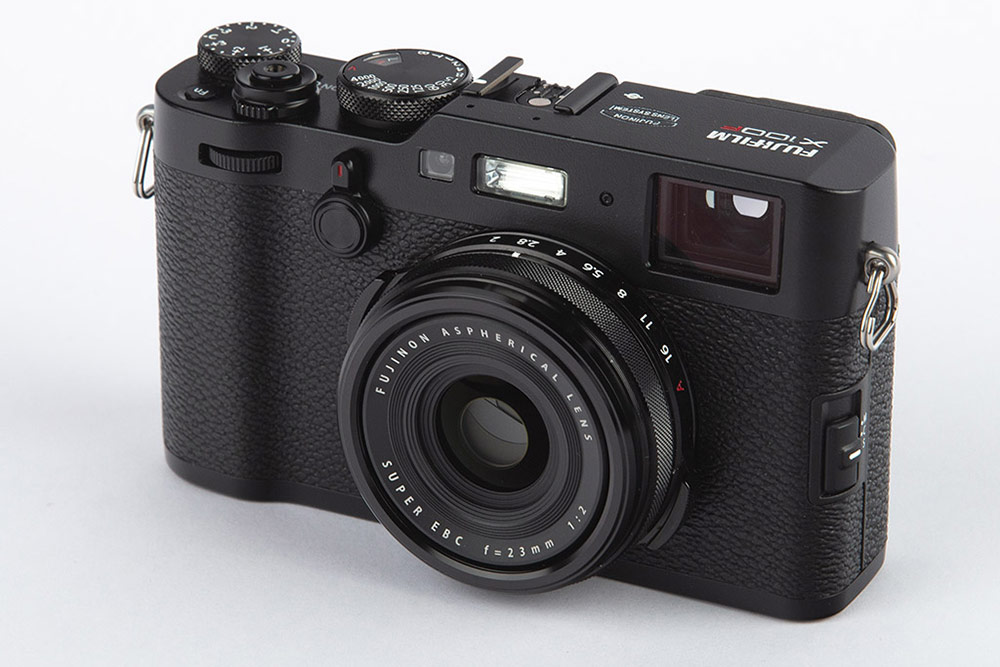
The Fujifilm X100F in black.
At a glance:
- Sensor:
- ISO range:
- Continuous shooting:
- Video:
- Price: around £779
Announced in January 2017, The Fujifilm X100F has the same APS-C format 24.3MP X-Trans CMOS III sensor and X-Processor Pro processor as is in the X-T2 and X-Pro2. However, it’s a compact camera with a fixed Fujinon 23mm f/2.0 lens that gives a focal length equivalence of 35mm.
That makes it a really nice choice of camera for environmental portraits, with the wide aperture giving you plenty of control over background blur.
Along with old-school controls that include a lens aperture ring and dials to adjust shutter speed, ISO and exposure compensation, the X100F has a hybrid viewfinder that lets you swap between a direct optical view and a 2.36m-dot electronic finder.
There are also eight Film Simulation modes available, including Pro Negative Standard, Classic Chrome and Acros, that all work well with portraits.
Read our Fujifilm X100F Review
Best second-hand portrait lens: Tamron SP 85mm f/1.8 Di VC USD
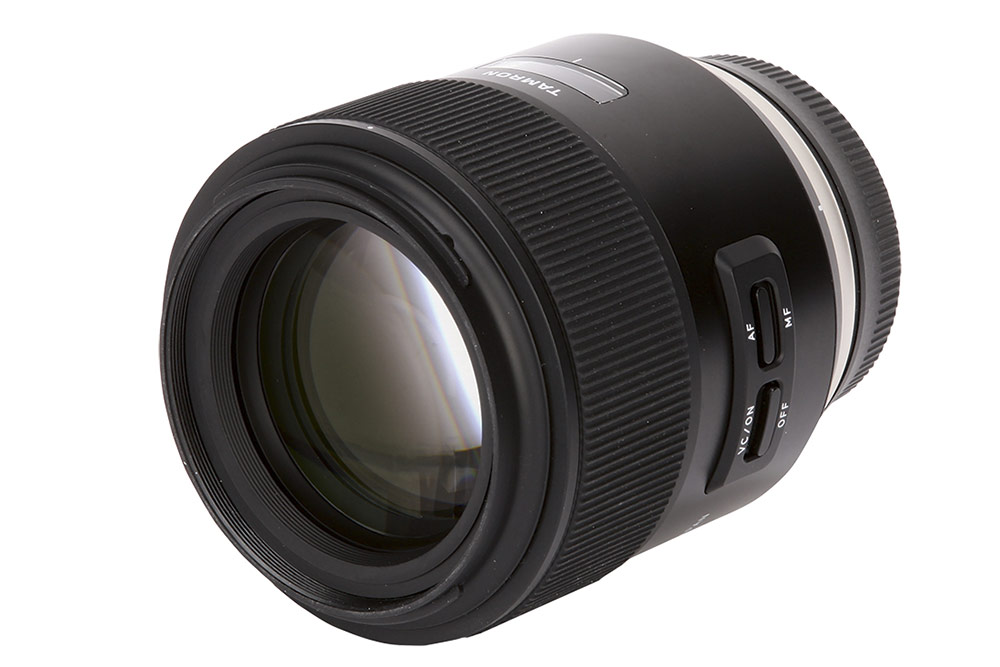
Tamron SP 85mm f/1.8 Di VC USD
At a glance:
- Elements/groups: 13/9
- Minimum focus distance: 80cm
- Weight: 700g
- Price: around £499 / $598
Available with Canon EF or Nikon F mounts, the Tamron SP 85mm F/1.8 Di VC USD is a chunky lens with excellent build quality and a snappy AF system that doesn’t change the length or balance of the optic in action. Its focal length is perfectly suited to portraiture and it’s equally at home on full-frame and APS-C format cameras.
Even when shooting with the aperture wide-open, there’s impressive sharpness across the whole frame while out-of-focus backgrounds look fabulous.
Our tests show that the micro contrast is quite low at f/1.8 and while this is flattering for portraits, if you want a bit more bite you just need to close down to f/2.8. Add in Tamron’s excellent Vibration Compensation stabilisation system and you’ve got an attractive lens in your bag.
Read our Tamron SP 85mm f/1.8 Di VC USD Review
Best second-hand portrait lens: Sigma 56mm F1.4 DC DN | C
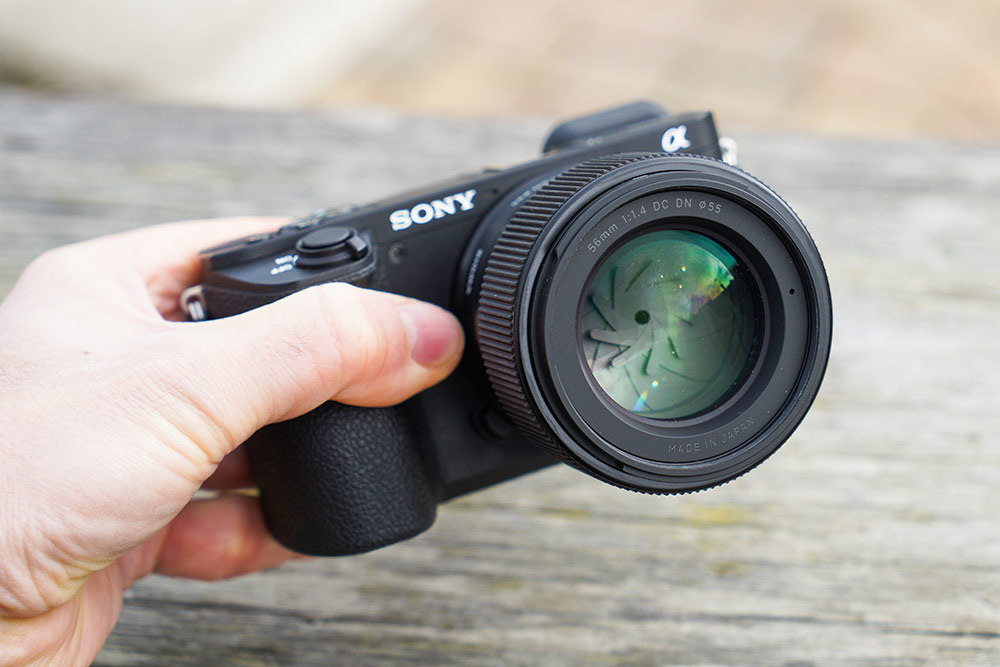
The Sigma 56mm F1.4 DC DN fits a variety of mounts. Photo credit: Michael Topham
At a glance:
- Elements/groups: 10/6
- Minimum focus distance: 50cm
- Weight: 280g
- Price: around £299 / $399
Sigma uses ‘DC’ to denote that this lens is designed for sub-full-frame cameras and it’s available with the Sony E, Canon EF-M, Micro Four Thirds, L-mount, and more recently, Fujifilm X. On the Sony A6100, the Sigma 56mm f/1.4 DC DN has an equivalent focal length of 84mm, while on a Micro Four Thirds camera it behaves like a 112mm lens, making it a great choice for flattering portrait photography.
The internal fly-by-wire electronic focusing is fast and quiet while the build of this compact lens feels great. This handling experience is matched by the high quality of the results. Shooting at f/1.4, the subject stands out well from smooth blurred backgrounds but stopping down to f/2 or f/4 delivers even sharper results.
Read our full Sigma 56mm F1.4 DC DN | C review.
Best second-hand portrait lens: Lensbaby Velvet 85

Lensbaby Velvet 85
At a glance:
- Elements/groups:
- Minimum focus distance:
- Weight:
- Price: around £399 / $399
Lensbaby has three Velvet lenses, the 28, 56 and 85. They all cover a full-frame sensor, but can also be used on APS-C and Micro Four Thirds cameras. With a focal length of 85mm, the Velvet 85 is often the first choice for portraiture, but the Velvet 56 translates to an 84mm lens on APS-C format cameras and 112mm on Micro Four Thirds.
Like all Lensbaby lenses, the Velvet 85 is a manual focus lens. It’s also hand-built and has a great-feeling metal barrel with long focus throw. The magic of a Lensbaby Velvet 85 happens at the wider apertures when subjects are rendered with a smooth, velvety glow that is flattering to skin, but it’s also possible to get sharp images by closing down to f/8 or smaller.
Discover more about the Lensbaby Velvet 85
Best second-hand camera for wildlife: Nikon D500

Nikon D500
At a glance:
- Sensor: 20.9MP APS-C CMOS (23.5×15.7mm)
- ISO range: 100-51,200; 50-1,640,000 (extended)
- Continuous shooting: 10fps
- Video: 4K (3840×2160) at up to 30p
- Price: around £1,099
Nikon introduced the D500 with the D5 in January 2016, at the time making them its flagship APS-C and full-frame DSLRs respectively. Enticingly, while the D500 is aimed at enthusiast photographers, it has a lot of the same technology as the pro-level D5, including the same sensor architecture and Expeed 5 processing engine.
Keeping the effective pixel count to a fairly modest 20.9 million enabled Nikon to give the D500 a native sensitivity range of ISO 100-51,600 with expansion settings pushing to ISO 50-1,640,000. Crucially for low-light sport and wildlife photography, noise is kept under control well throughout its native range with chroma noise only starting to become visible when the sensitivity is pushed to ISO 6400 and images are viewed at 100% on a computer screen.
One of the most exciting features of the D500 for sport and wildlife photographers is that it has the same 153-point Multi-CAM 20K autofocus module as the D5 – a camera aimed at photographers who shoot sports events professionally. This means that amongst the D500’s 153 AF points there are 99 cross-type AF sensors with the central one being sensitive down to -4EV and the other points are sensitive down to -3EV.
Also, as it’s an APS-C format camera, the D500’s AF points spread further across the frame than they do with the D5. Crucially, the D500’s AF system does a superb job of focusing on and tracking fast-moving subjects even in low light. This great focusing performance is paired with a maximum continuous shooting rate of 10fps (frames per second).
That rate can be maintained for up to 200 14-bit lossless compressed raw files, giving the ability to shoot high-quality raw files at 10fps for an incredible 20 seconds. While it doesn’t have quite the same heft or bullet-stopping build as the D5, the D500 is robust and heavily sealed against the weather and dust. That makes it suited for use on a rain-lashed touchline or at the edge of a mist-covered pond.
There’s also a good, deep grip to enable the photographer to balance long heavy lenses, and it can be paired with the Nikon MB-D17 Battery Grip (available for around £260) for extra purchase when shooting portrait orientation images. Being a DSLR rather than a mirrorless camera, the D500 has an optical viewfinder and it’s a great pentaprism unit that shows 100% of the lens field of view, so you shouldn’t have any surprises around the edges of images.
One of the bonuses of buying a Nikon DSLR is that your camera is compatible with a huge range of lenses, with plenty that are perfect for wildlife and action photography. The Nikon AF-S 70-200mm f/2.8G IF-ED VR II, for example, which is available in excellent condition for around £1,000, is a great starting point that offers an effective focal length range of 105-300mm on the D500 and a constant aperture of f/2.8.
If you want something longer, the Nikkor AF-P 70-300mm f/4.5-5.6E ED VR is temptingly priced at about £420 in excellent condition, while the AF-S Nikon 200-500mm f/5.6E ED VR will set you back a little over £1,000 but has much greater reach.
Best second-hand mirrorless for wildlife: Olympus OM-D E-M1 Mark II
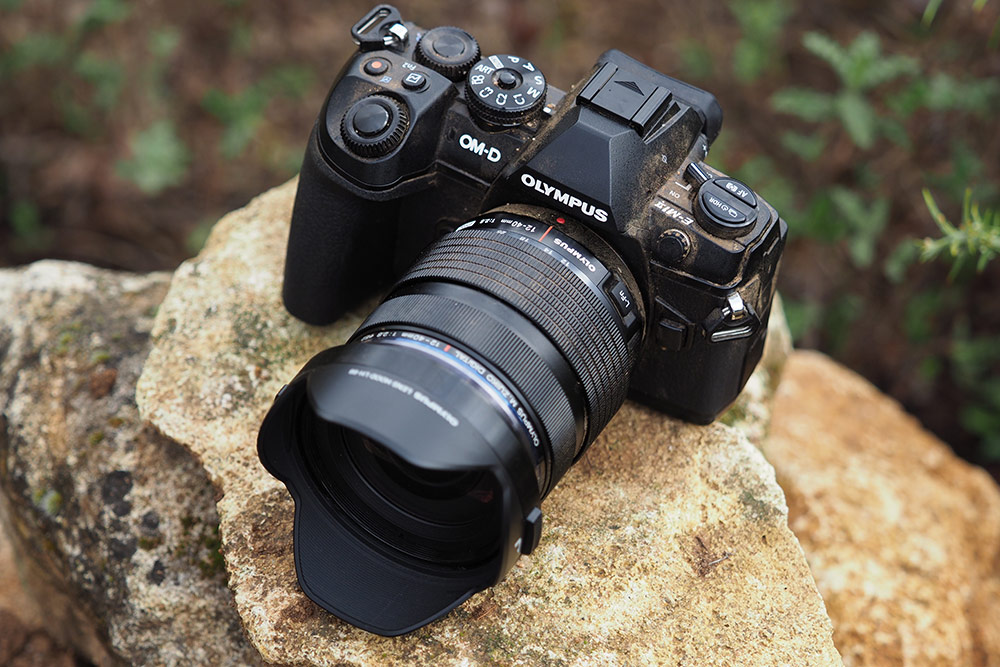
The Olympus OM-D E-M1 Mark II is a hardy, outdoorsy kind of camera. Photo credit: Andy Westlake
At a glance:
- Sensor: 20MP Four Thirds CMOS
- ISO range: 200-25,600, expandable to ISO 64
- Continuous shooting: 15fps mechanical shutter; 60fps with electronic shutter
- Video: Cinema 4K
- Price: around £459 / $663
Olympus introduced the OM-D E-M1 Mark III in February 2020, but it used the same 20.4MP Four Thirds type sensor as is in the E-M1 Mark II. The draw for wildlife photographers is the 2x focal length magnification factor that comes with the Four Thirds sensor.
This means that telephoto lenses are effectively much longer and more affordable than you’d expect for their size and weight. The Olympus M.Zuiko Digital ED 100-400mm f/5-6.3 IS, for example, is effectively a 200-800mm lens and weighs just 1,120g; while the wildlife photographer’s favourite, the M.Zuiko Digital ED 300mm f/4 IS PRO, is effectively a 600mm lens yet weighs only 1,270g. If you’re lucky, you might be able to pick up second-hand in good condition for around £1,700.
Read our Olympus OM-D E-M1 Mark II Review
Best second-hand bridge camera for wildlife: Sony Cyber-shot RX10 III

Sony Cyber-shot RX10 III
At a glance:
- Sensor: 20.1MP 1in sensor
- ISO range: 64-25,600 (extended)
- Continuous shooting: 12fps (5fps with AF tracking)
- Video: UHD 4K
- Price: around £649 / $719
The Sony RX10 III is a super-zoom bridge camera that delivers what most photographers hope for when they contemplate buying a camera with a versatile fixed zoom lens.
Inside it has a superb-quality 20.1MP 1-inch type sensor and at the front there’s a lens with an equivalent focal length of 24-600mm. Incredibly, that lens has a minimum focusing distance of 3cm at its widest point and 72cm at the telephoto end, plus the AF system does a good job of focusing more distant moving subjects.
As good as the RX10 III is, if you’re prepared to pay almost twice the money, the RX10 IV makes some worthwhile upgrades. Its CMOS sensor, for instance, has a stacked design and it’s paired with the Bionz X processor to enable continuous shooting at up to 24pfs with continuous autofocus engaged.
Read our Sony Cyber-shot RX10 III Review
Best second-hand wildlife lens: Tamron 100-400mm f/4.5-6.3 Di VC USD
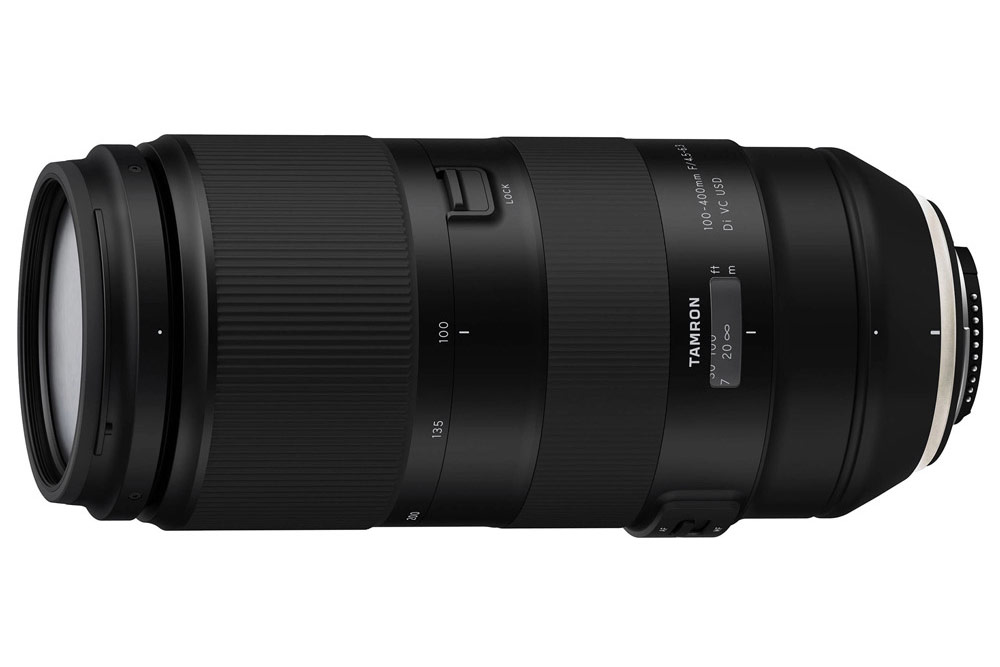
Tamron 100-400mm F/4.5-6.3 Di VC USD
At a glance:
- Elements/groups: 17/11
- Minimum focus distance: 149cm
- Weight: 1114g
- Price: around £549 / $549
Designed for full-frame or APS-C format Canon and Nikon DSLRs, the Tamron 100-400mm F/4.5-6.3 Di VC USD lens offers a popular focal length range for wildlife and sport photography without maxing out your credit card. It’s also relatively compact and weather-resistant, yet weighs just 1,180g with its lens hood.
That means you’re likely to be able to use it handheld rather than shackled to a monopod or tripod and you don’t need to worry too much if the weather changes during a shoot. With a maximum aperture range of f/4.5-6.3, you won’t get the best from the camera’s autofocus system, so you’ll get better performance in decent light. But the results are good, especially at the centre of the frame where your subject is most likely to be.
Best second-hand wildlife lens: Sigma 150-600mm f/5-6.3 DG OS HSM Sport
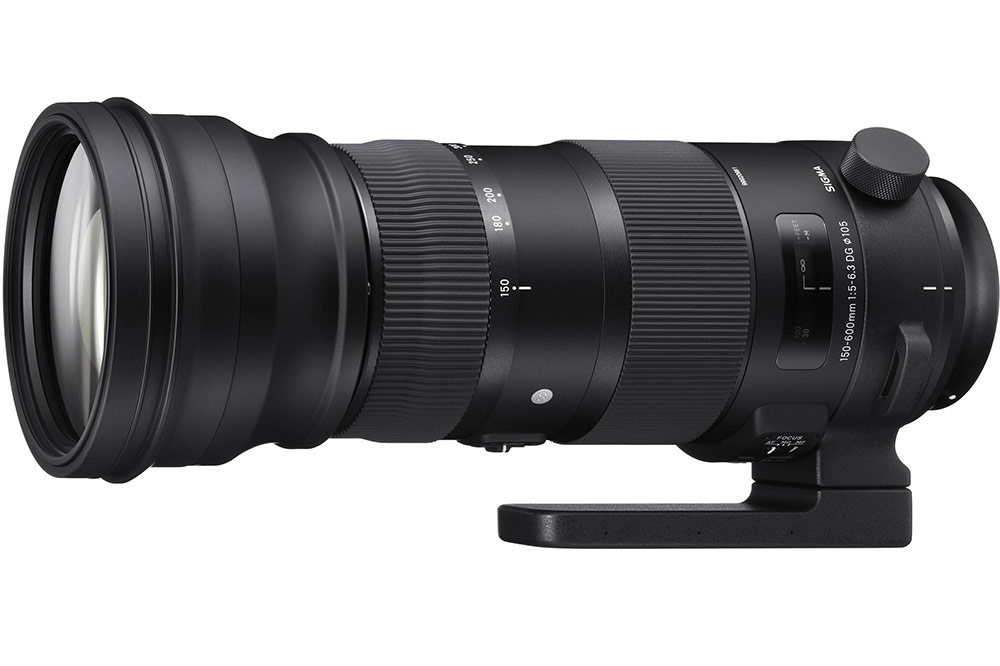
Sigma 150-600mm f/5-6.3 DG OS HSM Sport
At a glance:
- Elements/groups: 24/16
- Minimum focus distance: 260cm
- Weight: 2860g
- Price: around £989 / $999
Sigma offers two 150-600mm f/5-6.3 DG OS HSM lenses; the Sport version is the bigger, heavier and more expensive of the two, but it also has a more sophisticated optical design with 24 elements arranged in 16 groups with two FLD elements and three SLD elements.
Weighing in at around 2.86kg, the 150-600mm f/5-6.3 DG OS HSM Sport demands a monopod or tripod for long shoots whereas the 150-600mm f/5-6.3 DG OS HSM Contemporary, which has 20 elements in 14 groups with one FLD element and three SLD elements, is a more manageable 1.95kg.
Ultimately, while the Sport version is better sealed and a little sharper, it could be the weight and approximate £200 price saving of the Contemporary version that has the final sway.
Best camera for macro: Canon EOS 77D

The Canon EOS 77D on the AP testbench. Photo credit: Michael Topham
At a glance:
- Sensor: 24.2MP APS-C CMOS
- ISO range: 100-25,600; ISO 100-51,200 (extended)
- Continuous shooting: 6fps
- Video: Full HD at up to 60p
- Price: around £499 / $499
The EOS 77D sits at the lower end of Canon’s enthusiast-level DSLR line-up and it has an appealing collection of features, including some that are of particular interest to keen macro photographers.
Inside it has an APS-C format CMOS sensor with an effective pixel count of 24.2 million, which enables it to capture a good level of detail while noise is kept nicely in check – especially at the lower ISO settings that are most likely to be used for close-up photography.
While the 45-point AF system that is employed when images are composed in the EOS 77D’s optical viewfinder is very good, live view mode is often a better choice for tripod-based DSLR photography, especially when depth of field is limited by close focusing.
Helpfully, the EOS 77D’s 3-inch, 1.05-million-dot rear screen is mounted on a vari-angle hinge, which means that it can be flipped out from the camera’s body and rotated, to make it easy to see when the camera is awkwardly positioned for a shot. Canon used its Dual Pixel CMOS design for the EOS 77D’s sensor, which means that the 49-point autofocus system that’s available in live view mode uses phase detection.
While this live view AF system works very well for both stills and video shooting, in most macro situations it’s better if you switch to manual focusing and magnify the onscreen preview by 5x or 10x to make the details clearer. Although it has a healthy number of buttons and dials to give you direct control over its settings, the EOS 77D’s touchscreen can also be used to adjust settings and make menu selections.
This is especially helpful when the camera body is carefully positioned for a macro shot. The EOS 77D is also compatible with Canon’s Camera Connect smartphone app (available for iOS and Android devices) that enables you to take remote control over the camera and trip the shutter without pressing the shutter release.
Consequently, you can avoid introducing any unnecessary vibration that could blur images. For the ultimate in vibration avoidance, however, engage the EOS 77D’s mirror lock-up via the main menu. This sets the camera to lift the mirror with one press of the remote shutter release and then trip the shutter with a second press (or tap) made after any mirror-shock has died down.
Canon makes a few macro lenses, including two with the EF-S mount which means they’re made specifically for its APS-C format DSLRs. The EF-S 35mm f/2.8 Macro IS STM is a particularly interesting option because it has an LED integrated into the front element surround. This solves the issue of getting light on to a very close subject and it’s even possible to use the light on just one side or the other to reveal texture on the subject.
Available second-hand in excellent condition for around £330, the EF-S 35mm f/2.8 Macro IS STM has an equivalent focal length of 56mm on the EOS 77D and enables up to 1:1 (life-size) reproduction. There’s also the EF-S 60mm f/2.8 Macro USM (96mm equivalent) which has a closest focusing distance of 20cm, enables life-size reproduction and can be found for around £285 in excellent condition.
Best second-hand full-frame DSLR for macro: Nikon D810
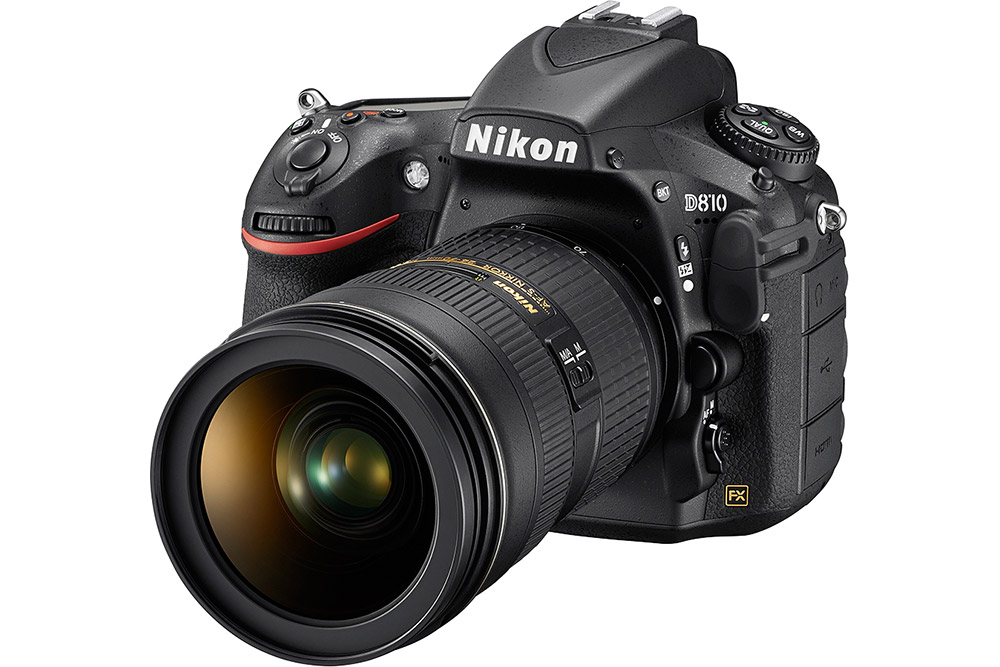
Nikon D810
At a glance:
- Sensor: 36.3MP FX-format CMOS
- ISO range: 64-12,800
- Continuous shooting: 12fps
- Video: Full HD at up to 60p
- Price: around £909 / $799
Before Nikon announced the 45.7MP D850 in August 2017, the 36.3MP D810 was the full-frame Nikon DSLR that enthusiasts hankered after and it remains a very good camera that’s capable of capturing lots of detail without filling your hard drive too quickly.
There’s no optical low-pass filter over the D810 sensor and it has a native sensitive range that starts at ISO 64 to enable maximum detail resolution. Also, as you’d expect with a high-end DSLR, the D810 has a mirror-up mode which sets it to lift the mirror with one shutter button press and then fire the shutter with a second press.
Conveniently, this is activated by way of the drive mode via the left of the top-plate and it can be used in combination with the electronic front-curtain shutter to avoid both mirror and shutter shock.
Best second-hand tough compact: Olympus Tough TG-5
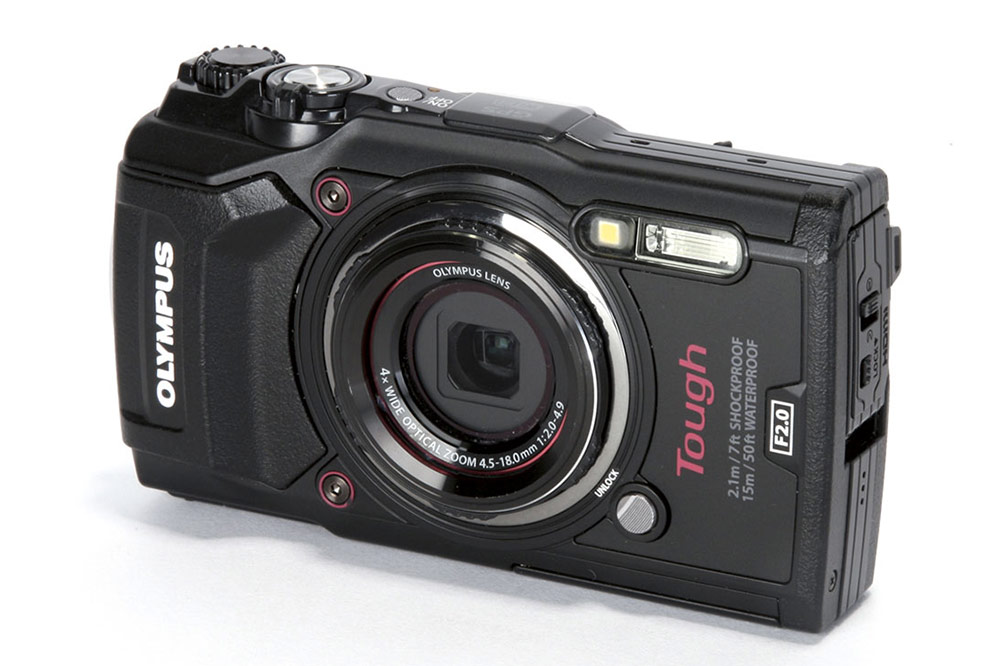
Olympus Tough TG-5
At a glance:
- Sensor: 1/2.3-inch 12MP BSI CMOS
- ISO range: 100-12,800
- Continuous shooting: 20fps
- Video: 4K at 30p
- Price: around £230 / $520
The Olympus TG-5 is a 16MP compact camera that earns its ‘Tough’ moniker by virtue of its ruggedised build that makes it waterproof down to 15m, shockproof to drops of 2.1m, freeze- proof down to -10°C and crushproof to a weight of 100kg.
There’s also a Microscope setting that’s selected via the mode dial and which enables the camera to focus on subjects just 1cm from the lens at any point in the 25-100mm equivalent focal length range. This is backed up by a focus stacking feature that triggers the camera to take a series of shots with slightly different focus distances.
The camera saves all the shots as well as a composite focus-stacked image. Combining this close-shooting functionality with the TG-5 waterproof construction enables all sorts of interesting shooting opportunities.
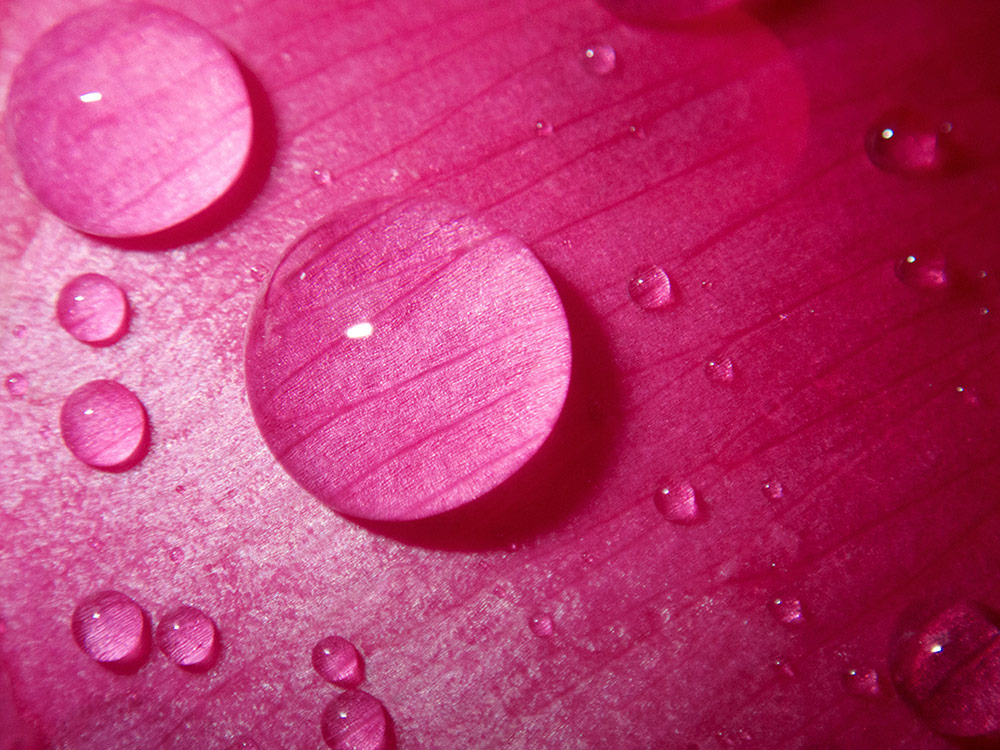
This close-up makes striking use of a single colour. Olympus Tough TG-5, 1/100sec at f/14, ISO 800. Photo credit: Angela Nicholson
Read our Hands-on Olympus Tough TG-5 Review
Best second-hand macro lens: Sigma 105mm f/2.8 EX DG OS HSM Macro
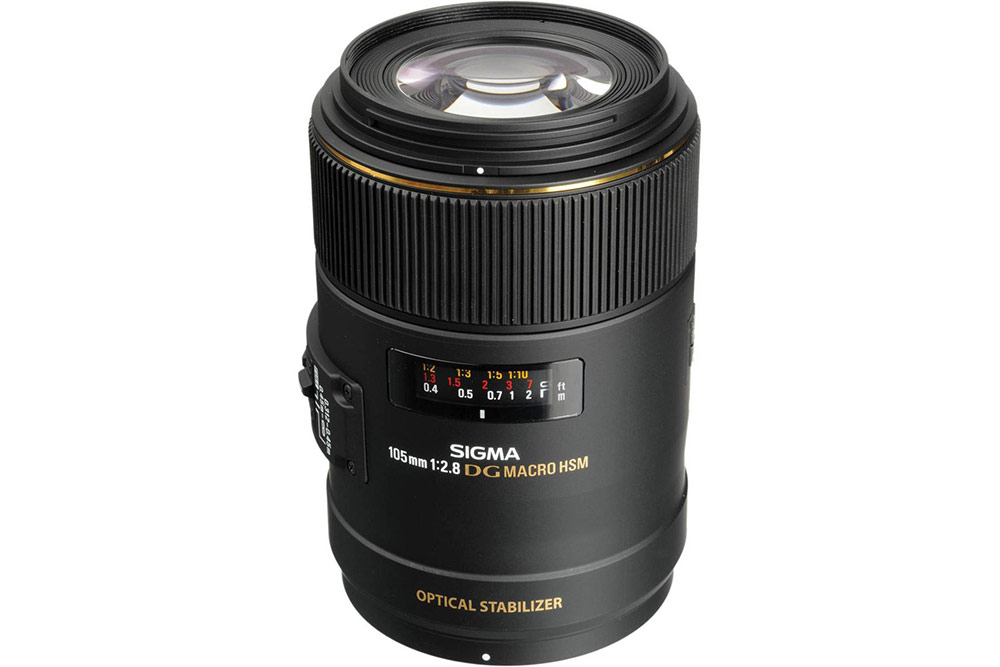
Sigma 105mm f/2.8 EX DG OS HSM Macro Lens in Nikon fit.
At a glance:
- Elements/groups: 16/11
- Minimum focus distance: 31.2cm
- Weight: 725g
- Price: around £269 / $419
In any conversation about macro lenses, it’s never long before the Sigma 105mm f/2.8 EX DG OS HSM is mentioned. It’s a full-frame lens available in Canon EF, Nikon F, Sigma SA and Sony A mounts, and it’s very popular as it’s exceptionally sharp with superb resolving power right up to f/16.
Naturally, as a dedicated macro lens, the Sigma 105mm f/2.8 EX DG OS HSM offers life-size reproduction at its closest focusing point of 31.2cm from the sensor – which is a comfortable working distance.
While many macro photographers prefer to mount their camera on a tripod, this Sigma 105mm can be used for a wide range of photography genres – it’s a good portrait lens, for example, so the on-board Optical Stabilizer (OS) is handy.
Read our Sigma 105mm f/2.8 EX DG OS HSM Macro Review
Best second-hand macro lens: Tamron SP AF 60mm F/2.8 Di II LD [IF] Macro 1:1
![Tamron SP AF 60mm F/2.8 Di II LD [IF] Macro 1:1](https://amateurphotographer.com/wp-content/uploads/sites/7/2022/07/Tamron-SP-AF-60mm-F2.8-Di-II-LD-IF-Macro-1-1.jpg)
Tamron SP AF 60mm F/2.8 Di II LD [IF] Macro 1:1
- Elements/groups: 14/10
- Minimum focus distance: 23cm
- Weight: 388g
- Price: around £219 / $269
Designed specifically for APS-C format DSLRs, the Tamron 60mm F/2.8 Di II LD [IF] Macro 1:1 is available in Canon EF-S, Nikon F and Sony A mount and has an equivalent focal length of around 93mm.
It’s intended as an APS-C version of Tamron’s popular 90mm macro lens for full-frame cameras but its narrower image circle means it’s a smaller, lighter (350g) optic. The closest focusing distance is 23cm, which is reasonably comfortable and gives just enough room to use artificial light sources without having to fork out for dedicated macro lights.
Shooting at that distance gives life-size (1:1) reproduction, but the lens can also be used further away from the subject and it makes a great portrait optic.
Further reading
- What are the best DSLR cameras you can buy?
- The best second-hand full-frame camera bargains
- Best Second-hand Macro Lenses
- Best second-hand full-frame mirrorless cameras
- Best second-hand camera systems for under £1000
- 12 Best Second-hand Classic Compact Cameras

